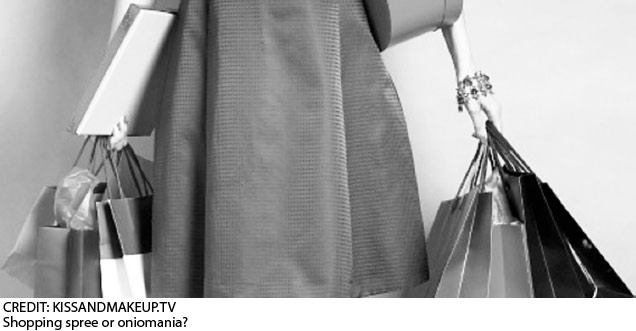Shop till you drop

Any job I have ever had, regardless of the field of work I've been in, has had a uniform policy. Some restaurants required a white button- down shirt, while others provided me with a logoed golf tee. Summer camp demanded washable tanks and sturdy shoes. My current position at Yorkdale Shopping Centre requires a fashion equivalent of an athlete's game face: getting ready for work takes work.
I'd like to believe I put so much thought into my work attire as I have a sense of pride for my position and what it represents, but deep down, I know it's because Yorkdale is a designer jungle where the shoppers are cougars — lithe creatures waiting to attack their prey. Often clad in Louboutins, oversized Prada sunnies and toting a Louis, these women advance on poorly dressed people as much as they do the stores they shop in.
I know this because I see them daily; these women are the very definition of shopaholics, allowing Yorkdale to enjoy earning the highest sales per square foot of any mall in North America (and making it a near miracle to find a parking space).
Judging aside, these shoppers are busy spending, spending, spending. Many of them are what we call 'VIP clients' as they are regulars at bringing our numbers up. From a business standpoint, these are our perfect clients. (From an employee who tidies up after them, it can be a different story.) From a behavioral analysis's perspective, a few of them may be suffering from oniomania. While some of these slim, well dressed and incredibly wealthy women are plunking down their plastic simply out of genuine need or want for the garment, a few are fulfilling a compulsive desire to shop.
Oniomania, the technical term for a shopping addiction, is a very real and serious addiction. Illustrated for over 100 years, oniomania is categorized by either a clinical addiction or an impulse control disorder.
Similar to any substance addiction, shopping addicts suffer a cycle of endorphin-charged highs followed by crashes. The compulsive need to buy is driven beyond personal consumer need and is fuelled by what psychiatrists believe is a desire to feel special and fight loneliness as well as make them a better person. This pattern can lead to debt and failed relationships with friends and family. In serious cases, the person suffering from the condition may shop in secret or destroy their purchases to hide the extent of their addiction.
Consumerism has exploded over the past few decades, with figures of power from politicians to advertisers aggressively encouraging the population to spend. Experts believe oniomania is a 'significant modern or postmodern addiction' as our culture advocates spending our earnings on shopping. 'Retail therapy' is a term based on the feel-good high achieved when making a purchase, and marketers have tapped into this and used it to their advantage. Oniomanics are on a constant search for this high and self-medicate with shopping.
Oniomania sufferers need clinical treatment to overcome their addiction, and they are treated with similar methods used with those with compulsive gambling or any other impulsive control disorder. If you or someone you know may have a compulsive shopping problem, contact a counselor or mental health professional for help.













